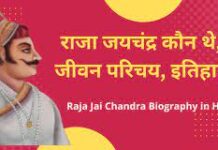Belize was traditionally an important region of the Mayan civilization, which spread over much of southern Mexico, Belize and Guatemala from 1500 BC to 800 AD. A central hub for trade and transport by road, river and coastline, Belize was home to perhaps two million Maya who lived in important cities like the huge ceremonial ground of Caracol in Cayo District during its peak. Other sites such as Altun Ha, Lamanai and Xunantunich were major centers of trade and religion, while the treasures of El Pilar and La Milpa are still being revealed from the jungle. All of these Mayan cities are major tourist attractions in Belize today.
When the Spanish Conquistadors arrived in Central America in the 16th century they basically sailed right past Belize. There were a few brutal attempts to colonize the area, but the Spaniards had no success and abandoned all efforts by the middle of the 1600’s.
Instead, it was the English and Scottish (and a few pirates) who were first to establish colonies in Belize as early as 1638. Known as the Baymen, they engaged in logging for timber and dyewood. The Spanish wanted Belize, however, and fought with the Baymen until finally losing the Battle of St George’s Caye in September 1798. This date is now a Belizean national holiday.
As part of the British Empire, Belize imported more African slaves from the Caribbean to mill timber. They are the descendents of today’s Garífuna community. When the Spanish gave up their claims on Central America, Britain stepped in and created British Honduras. The 20th century brought economic hardships and world wars that forced the British to loosen their grip on Central America.
In response to the economic chaos, citizens of British Honduras requested independence and were granted self-rule in 1964. In 1973, British Honduras was renamed Belize, but Guatemala claimed most of the territory as its own. It wasn’t until 1981 that Belize was born as a nation in its own right, making it one of the youngest in the world.
Culture
Belize is a real gem in terms of cultural diversity within Central America. From the remnants of the Mayan empire, the indigenous people mixed with a parade of different visitors including pirates, Brits and African slaves from the Caribbean. Toss in the Garífuna people who settled the southern coast in the 19th century and a steady flow of Chinese, Indian and Mexican immigrants and you’ve got a genuine melting pot.
Despite the unique mix, Belizeans tend to get along really well. The country has a noticeably harmonious vibe and little evidence of racism. Perhaps it’s an effect of living together in such a small (just 300,000 citizens) and young nation, but the friendly mix of Afro-Caribbean and Latin culture is a joy to experience. Belize doesn’t offer much in the way of performing arts, but the Bliss Institute in Belize City is the best bet for theater, music or dance.
Mostly, Belizean culture is about having fun. Witness the purely unique Belize gambling sport of the Chicken Drop and you’ll get the idea. Best experienced on Ambergris Caye, it’s like shooting craps (literally). A chicken is released onto wire mesh suspended over a grid of numbers, and the one who poops first is the winner. Bets are made on the number of droppings and it’s a lot of fun.
There are also several ways to immerse yourself into the indigenous Mayan culture. The Maya Village Homestay Network (501-722-2470) is a group that places visitors with a local family for a night or two of authentic cultural interaction. Crooked Tree Wildlife Sanctuary is home to a Creole village of 900 souls that welcome guests for overnight stays for a great mix of nature and culture.
Belize offers its visitors an eclectic and fun-filled calendar of cultural festivals and special Belize holidays spread throughout much of the year. The International Costa Maya Festival celebrates the ancient Mayan heritage on Ambergris Caye each August with dancing, music and parades. Each November the Garifuna Settlement Day showcases the unique culture of this essential Belizean group in Punto Gordo, and of course February’s Carnival is as fun as anywhere else in the Caribbean region.
San Pedro Carnival
A highlight of virtually every nation in the Caribbean region, Belize is no exception. Every February, the week before Lent, Ambergris Caye transforms into a huge street party with costumes, parades, music and all kinds of fun for kids and adults alike.
Baron Bliss Day
Baron Bliss Day honors one of Belize’s founding fathers with a regatta in the harbor next to the lighthouse where the man is buried. Horse races, cycle races and other fun events are scheduled in Belize City along the waterfront every 9 March.
San Jose Succotz Festival
Held to celebrate the patron saint of the town in Cayo District, San Jose Succotz is one of the more down-to-earth cultural festivals in Belize. It blends the traditional marimba music, dance and food of the mountainous interior every April.
Cashew Festival
A great excuse to spend a day or two in one of Belize’s top national parks, Crooked Tree Wildlife Reserve is the setting for Cashew Festival every May. The park’s Creole village shows off the amazing cashew in ways you can only dream of, adding to the overall scene.
Toledo Cacao Fest
Showcasing the enduring enchantment of chocolate for three days in the middle of May, arts and crafts complement the informative side of Toledo Cacao Fest that teaches how the ancient Maya used the cacao bean for many purposes.
Lobsterfest
June 14-19 is a chance to indulge in this sumptuous sea creature in every manner imaginable. Coastal communities all along Belize’s coast like Placencia, San Pedro and Caye Caulker all put on a fun day of eating lobster, drinking and having a good time on the beach.
International Costa Maya Festival
One of the premier cultural events in Belize every August, for a week San Pedro brings the heritage of the Maya to Ambergris Caye for an extravaganza of cultural performances, parades and the nation’s top beauty pageant.
Garifuna Settlement Day
Celebrating the arrival of this special ethnic Caribbean group to the southern coast of Belize in 1832, this annual event happens only in the southern towns of Belize like Punta Gordo every November 19.It’s a great chance to see more of this important component of the nation’s ethnic diversity.
PanAmerican Day
PanAmerican Day honors the Mestizo culture of Belize in Corozal and Orange Walk with revelry, music, dancing, parades and some serious partying every October 9th. Horse races and all kinds of fun run for a week in both towns.
O, Land of the Free by the Carib Sea,
Our manhood we pledge to thy liberty!
No tyrants here linger, despots must flee
This tranquil haven of democracy
The blood of our sires which hallows the sod,
Brought freedom from slavery, oppression’s rod
By the might of truth, and the grace of God,
No longer shall we be hewers of wood.
Arise! ye sons of the Baymen’s clan,
Put on your armour, clear the land!
Drive back the tyrants, let despots flee –
Land of the Free by the Carib Sea!
Nature has blessed thee with wealth untold,
O’er mountains and valleys where prairies roll;
Our fathers, the Baymen, valiant and bold
Drove back the invader; this heritage hold
From proud Rio Hondo to old Sarstoon,
Through coral isle, over blue lagoon;
Keep watch with the angels, the stars and moon;
For freedom comes tomorrow’s noon.







[…] you find this post about ”Maya Dolas in Hindi” useful. if you like this information please share on […]